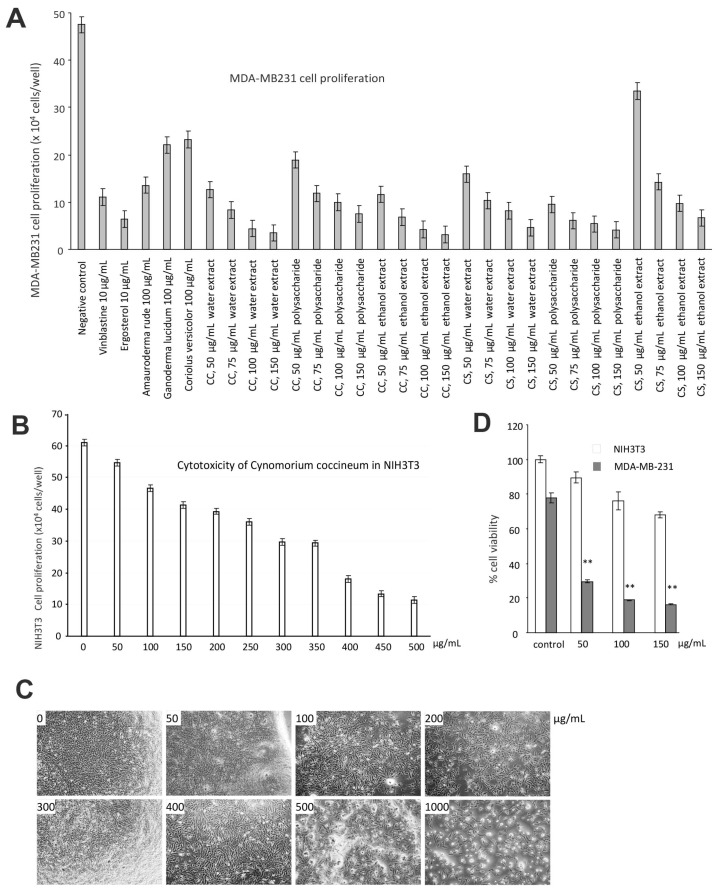Figure 3.
C. coccineum inhibits cancer cell proliferation: (A) MDA-MB-231 cells were cultured in tissue culture plates to subconfluency, to which the extracts of C. coccineum and C. songaricum were added at the concentrations as indicated. Vinblastine, ergosterol, extracts of Ganoderma lucidum, Amauroderma rude, and Coriolus versicolor were used as controls. The negative control contained the buffer alone. The extracts of Cynomorium plants were the most effective agents in inducing cancer cell death. (B) The effects of C. coccineum on the non-cancer cell line NIH3T3 fibroblasts were tested. Very high concentrations of C. coccineum were needed to induce cell death. (C) Typical photos of NIH3T3 fibroblasts treated with C. coccineum are shown. (D) The effects of C. coccineum are compared in NIH3T3 fibroblasts and MDA-MB-231 cells. C. coccineum possesses significantly stronger activity in inducing cell death in MAD-MB-231 cells relative to NIH3T3 fibroblasts. ** p < 0.01.

